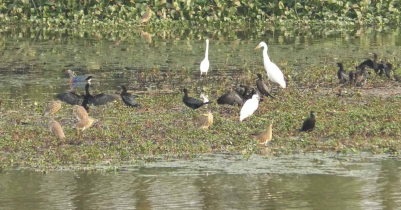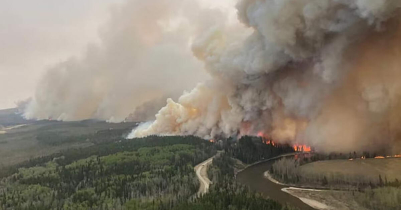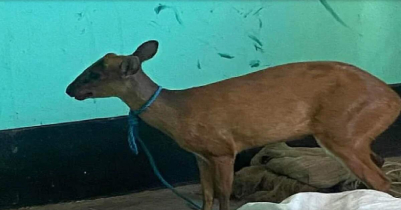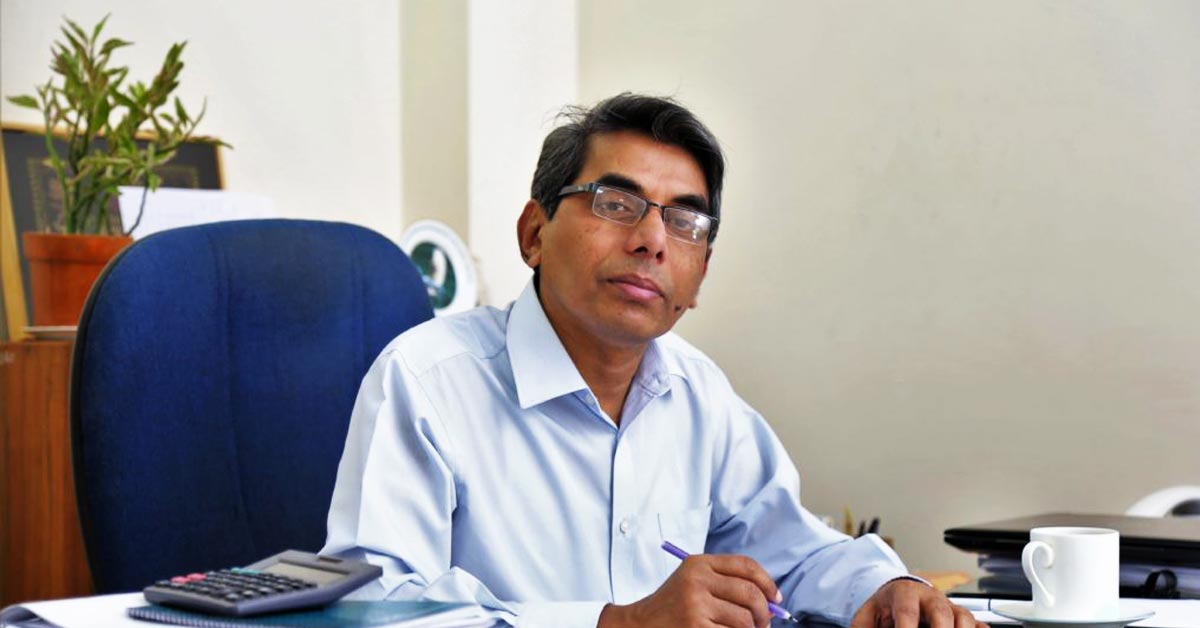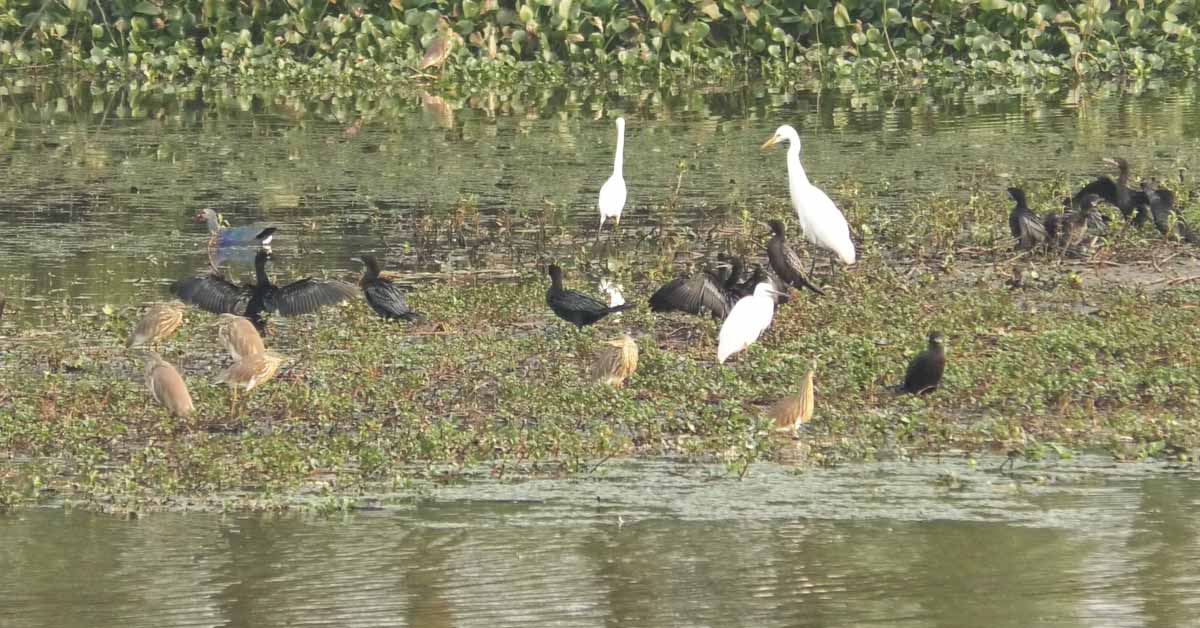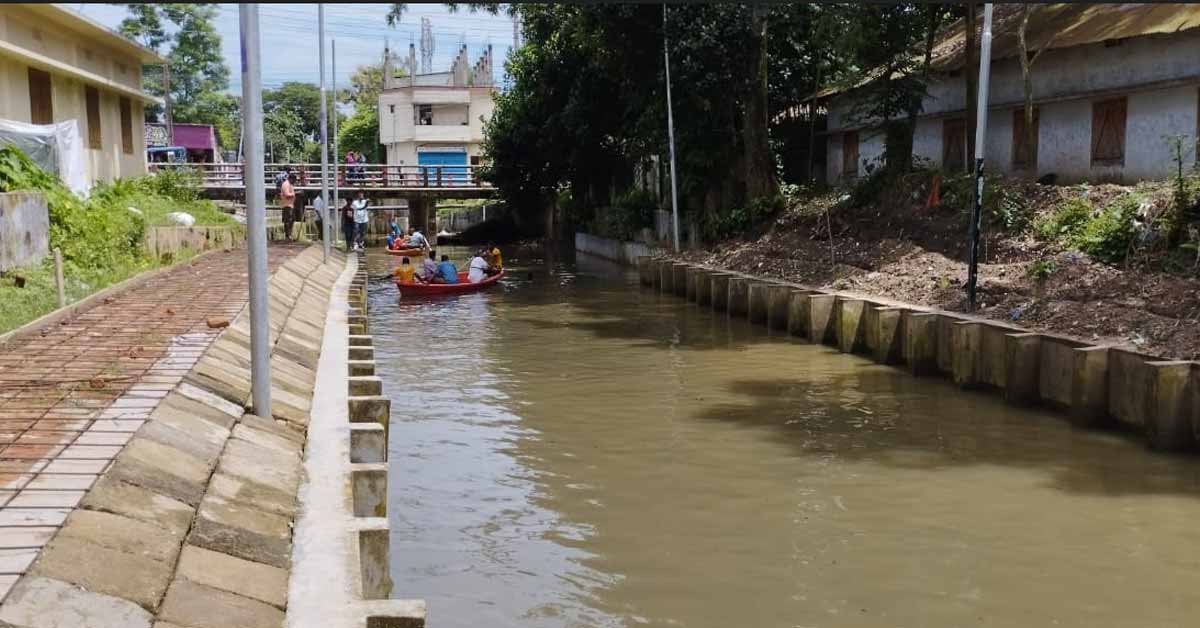Hasanat Kamal
Update: 18:44, 25 October 2025
Farmers’ Dreams Revive in Binnar Haor Through Youth Initiatives
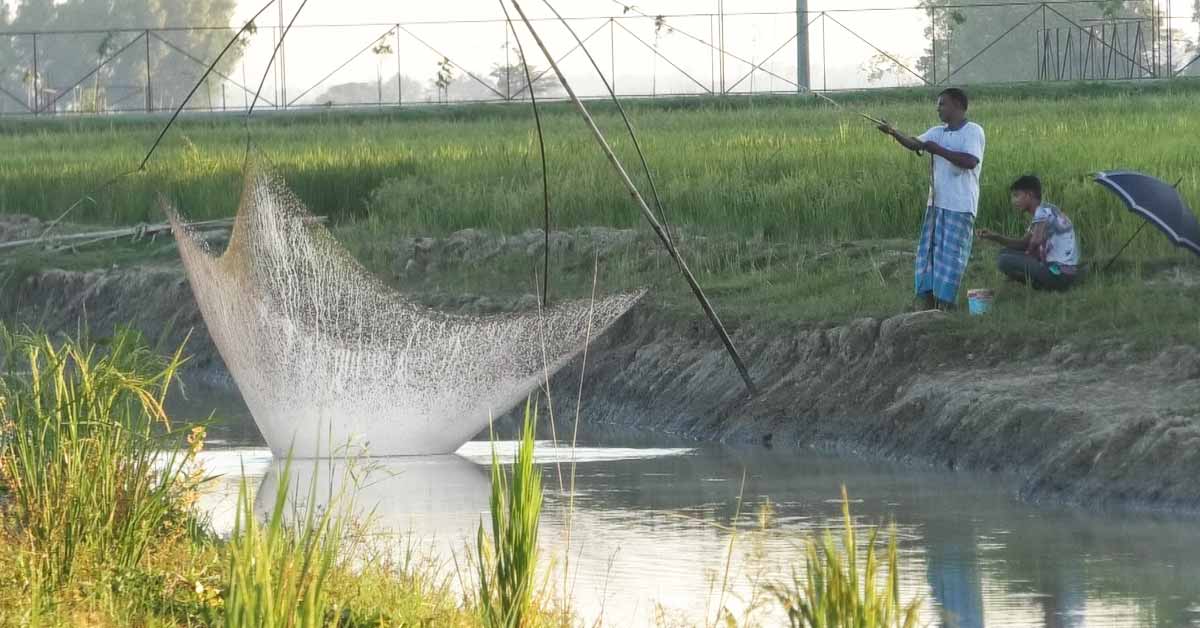
The Binnar Haor has regained life with the excavation of the Lachidhara Canal. Photo- Hasanat Kamal
Binnar Haor, adjacent to Khanjar Haor, is one of the main natural sources of paddy and fish in Moulvibazar Sadar Upazila. However, over the years, the canals and reservoirs that maintained water flow in the haor became silted and filled up, making cultivation impossible due to water shortages. The natural breeding grounds for fish also disappeared. The scenario of the haor has now changed—thanks to a group of local young entrepreneurs. In one part of this haor, farmers’ dreams are coming back to life.
the previously occupied and dried-up Lachidhara canal has turned into a water reservoir. This has completely transformed the haor. Alongside high-yield rice varieties, local traditional ones such as Biroin, Moynashail, Nazirshail, and Balam are now cultivated. Rabi crops, vegetables, wheat, and maize are thriving. Natural fish species like koi, shing, magur, shol, puti, tengra, and boal have reappeared. Birds and biodiversity have returned. Educated young farmers and agricultural producers are being drawn to this fertile land. Farmar Syed MAhmud Ali
Field visits and discussions with farmers revealed that the Lachidhara canal lies between Khanjar Haor and the adjoining Binnar Haor. At one time, the canal became filled and encroached upon, disrupting paddy cultivation on about 700 to 800 bighas of land. Moreover, the canal’s blockage disconnected its link with the Kodalichhara stream.
Farmer Machland Mia said, `I have been cultivating paddy in Binnar Haor for 30 years. Due to lack of water, we couldn’t grow crops properly. After dredging the Kodalichhara upstream, we are now getting some water. But the canals connected to Kodalichhara had all been filled in. We had to spend thousands of takas pumping water for irrigation. The situation has changed a lot. After the excavation of Lachidhara canal, single-crop lands have now become triple-crop lands.’
Local farmer Shankar Das said, `Most of the canals connected to Kodalichhara had been filled up and disappeared. Many parts of the canals were occupied by people. Over the past 60 to 70 years, the canals became totally silted.’
Farmer Nikhil Kumar Das said, `The canal got filled up and blocked long before the country’s independence-1971. Farmers of this haor suffered greatly. Around a hundred farming families were held hostage by a local group that occupied the canal’s land for many years. Gradually, the canal completely lost its existence.’
One of the entrepreneurs who helped change the face of Binnar Haor is Jahed Ahmed Chowdhury. He said, `We have several plots of land in the haor, but crops wouldn’t grow due to lack of water. In 2022, I learned that there was a government canal here called ‘Lachidhara.’ It had disappeared due to encroachment and siltation. With the support of local journalists and the district administration, the Lachidhara canal was recovered. A few of us young people came together and re-excavated the canal ourselves.’
`Now the Lachidhara canal has turned into a reservoir. It holds water and is directly connected to Kodalichhara. The scene of Binnar Haor has changed. Lands that once produced a single crop now yield three or four crops annually. Alongside high-yield rice varieties, local traditional varieties such as Birion, Moynashail, Nazirshail, and Balam are also being cultivated. Rabi crops, vegetables, wheat, and maize are growing as well.
`Fish species that had disappeared 50 years ago—such as koi, shing, magur, shol, puti, tengra, and boal—have returned. Lachidhara has become a habitat rich in wildlife and plant diversity. Educated young farmers and agri-entrepreneurs are being drawn to this revitalized farmland,’ said Jahed Ahmed Chowdhury.
Local residents said that in 2022, upon learning about the problems faced by farmers in the haor, Moulvibazar Deputy Commissioner Mir Nahid Ahsan personally visited the area along with senior officials of the Department of Agricultural Extension, the Upazila Nirbahi Officer (UNO), the Assistant Commissioner of Land (AC Land), senior officials of the Water Development Board, and other concerned departments. After inspecting the farmers’ fields, the Deputy Commissioner promised swift action.
Farmers said that thanks to the Deputy Commissioner’s initiative, the Lachidhara canal has come back to life. Hundreds of farming families have benefited directly. Single-crop lands now produce three crops a year, and both rice and natural fish production have increased.
Landowner of the haor, Syed Mahmudur Ali, said, `As a result of this initiative, the previously occupied and dried-up Lachidhara canal has turned into a water reservoir. This has completely transformed the haor. Alongside high-yield rice varieties, local traditional ones such as Biroin, Moynashail, Nazirshail, and Balam are now cultivated. Rabi crops, vegetables, wheat, and maize are thriving. Natural fish species like koi, shing, magur, shol, puti, tengra, and boal have reappeared. Birds and biodiversity have returned. Educated young farmers and agricultural producers are being drawn to this fertile land.'
The then Deputy Director of the Department of Agricultural Extension (DAE) in 2022, Kazi Lutful Bari, said, “Farmers had only one demand: ‘Give us water, and we will grow crops.’ The canal was an old one that had become completely silted up. Under the leadership of the Moulvibazar Deputy Commissioner, everyone—including public representatives—came together to recover it. Now the water has returned. Farmers can cultivate boro rice and other crops in three seasons—rice, wheat, maize, and rabi crops. About 700–800 bighas of land have been brought under cultivation. This is one of the biggest locally driven changes—a revolution—that I have witnessed in my career.”
The then Executive Engineer of the Moulvibazar Water Development Board, Akteruzzaman, recalling everyone’s cooperation in reclaiming the land, expressed gratitude on behalf of the Water Development Board. He said, `The canal was re-excavated entirely through voluntary labor. This should be a message for all districts. If it had been done under a government project, it would have cost around 5 million taka.'
Read a special story about the wetlands of Bangladesh: Wetlands Under Threat in Bangladesh – Initiatives to Protect
Read more:
- Bear Grylls announced to become a forest dweller
- Deer rescued with legs tied in Habiganj
- Alberta declares state of emergency over wildfires
- Satellite on Fishing Cat Body (Video)
- Satellite on Fishing Cat in Moulvibazar (Video)
- The Untold Stories: Indigenous Rights, Climate, and Social Justice
- Wetlands Under Threat in Bangladesh – Initiatives to Protect
- Farmers’ Dreams Revive in Binnar Haor Through Youth Initiatives



